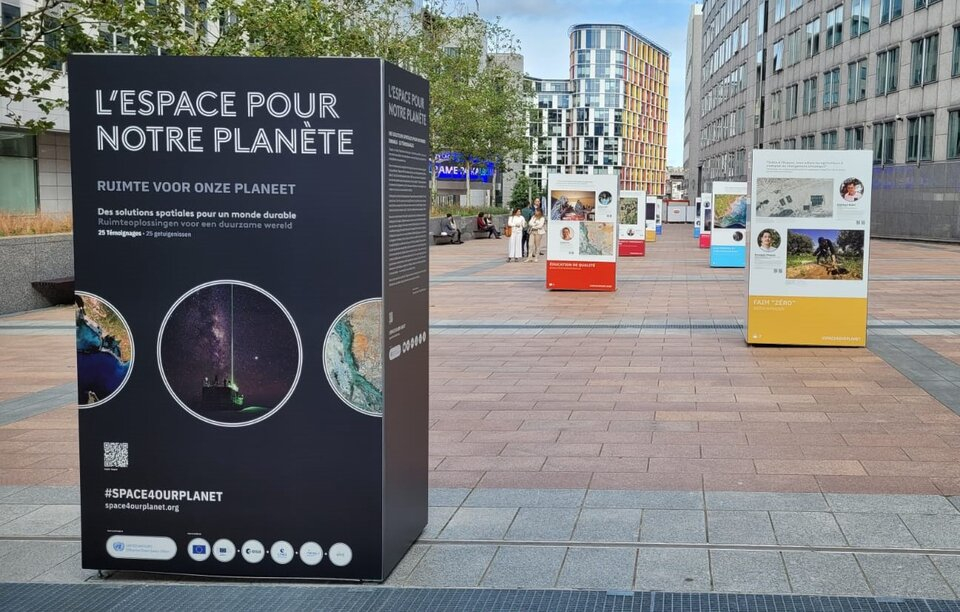Published on 28 September 2021
Space for our Planet shows the crucial role of space in our transition towards a sustainable future. The exhibition is made up of 25 portraits of 'agents of change'. From fishers to climate experts, astronauts to students, and oceanographers to doctors, the 25 interviewees share their stories of how they are using space to achieve the United Nations' Sustainable Development Goals (SDGs).
The European space Agency, the European Commission, French Space Agency CNES, NEREUS, and GIVE are the main participants in the exhibition, which is being produced under the patronage of the UN Office for Outer Space Affairs. Through audio interviews, images and text, each portrait tells the story of how space is providing a specific solution to one of the 17 SDGs.

Space for our Planet photo exhibition on the Esplanade of the European Parliament in Brussels
In 2018, ESA became the first space agency to have a catalogue of space projects supporting the SDGs. Anybody can browse the catalogue; it provides examples of how space is already supporting the SDGs, creating visibility for the added value of space data, applications, and technologies for tackling the global challenges we are facing today.
"All our space assets are deployed in monitoring the implementation of the Sustainable Development Goals," says ESA Director General Josef Aschbacher. "Thanks to our satellites, we provide crucial indicators and information about targets and the achievement of goals. For those goals related to poverty, food security or water quality, for example, we use Earth observation satellites combined with telecommunications and navigation services to monitor agriculture, evaluate crop yields and ensure that people have access to food."
ESA has contributed to Space for our Planet with concrete examples of how data from Earth observation, telecommunications and navigation satellites – as well as knowledge gained through International Space Station research – support SDGs: eradicating poverty, improving human health, contributing to industry and innovation, promoting responsible consumption, and fostering world peace.